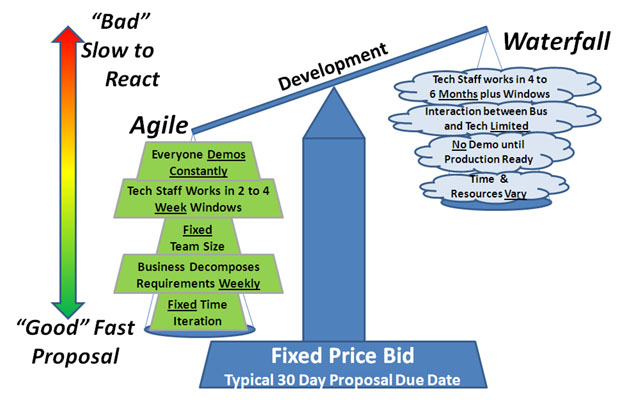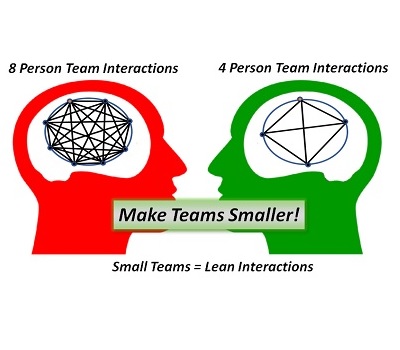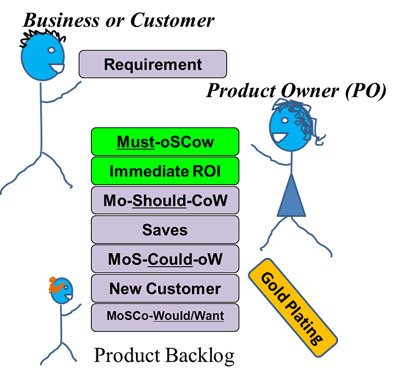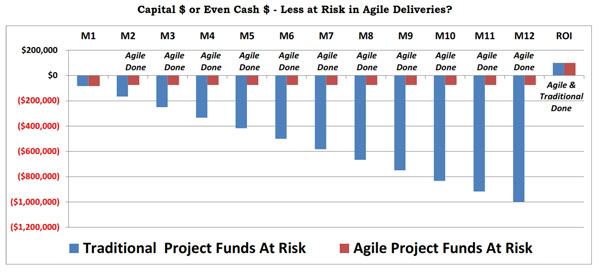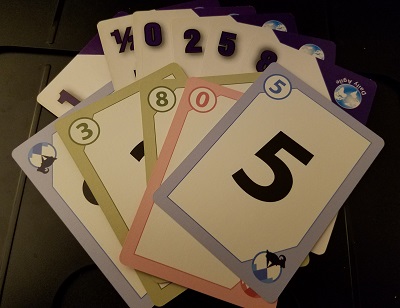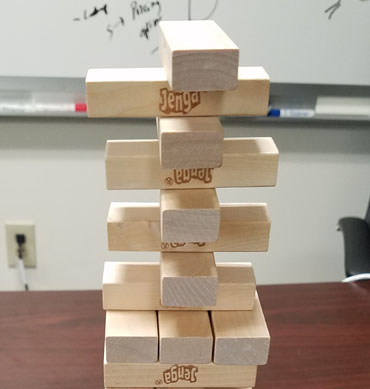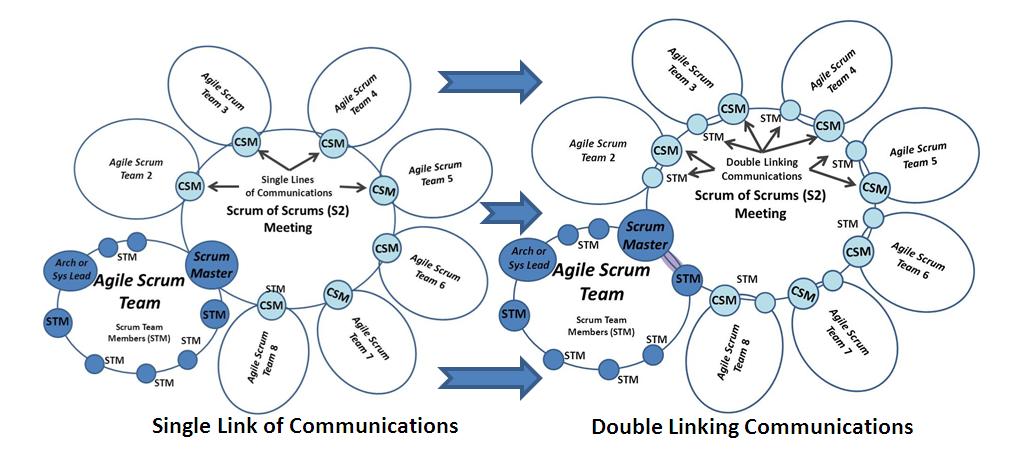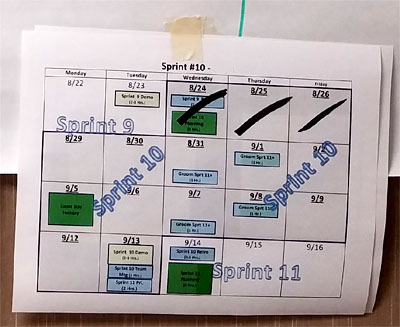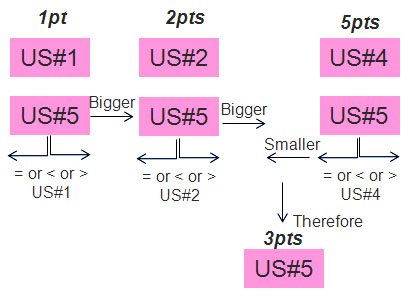A different look at Scrum Communication lines between Scrum Masters, Scrum of Scrums, Product Owners, Architecture or Systems Leads and within the Scrum Teams themselves, through a concept of Communication Circles and Double Linking. First off, I have always thought of Scrum Teams as a form of Circle Hierarchy, so this concept of Communication Circles was not a stretch for me to grasp. In fact, my Daily Meetings form a sort of circle, just naturally. What is different is how communications are conveyed up and down the chain in a scaled Agile environment.
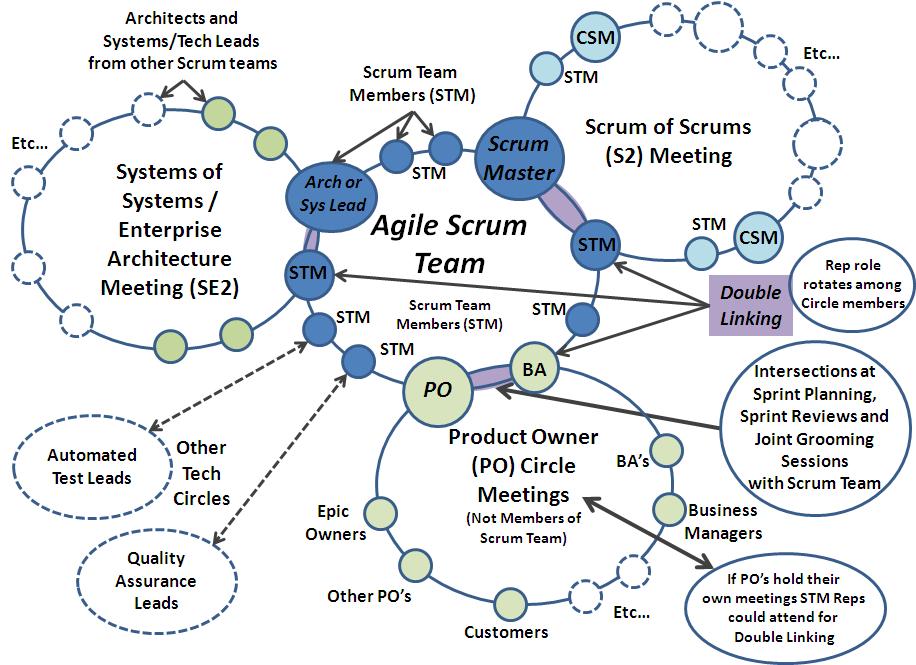
In past AgilePhilly (http://www.agilephilly.com/) and Agile Delaware (http://www.meetup.com/Agile-Delaware/) meetings, Speaker Sheella Mierson, Ph.D. presented a topic entitled “Dynamic Governance: A Method for Agile Organizations”. In her presentation, she presented some of the similarities between Agile principles and the principles of Dynamic Governance (http://sociocracyconsulting.com/). I’ll let others talk to the similarities and difference. In this article, the discussion is applied further to specifically talk to Scrum activities, roles and scaling.
What I liked from the discussion was the concept of “Double Linking”. In my take of the concept there is a Leader and Representative of the Circle Teams. Examples of “Leader“ positions in the Agile Scrum world might be Certified Scrum Masters (CSM), maybe Tech leads such as Architects, Systems Engineers or other expert techs on the Scrum Team , Product Owners and Lead Testers or Quality Assurance (QA), etc..
The “Leader” roles vary depending on the subject group such as Scrum of Scrums, Architecture Planning Meetings and Product Owner Business Need Teams. To improve the clarity and open trust of the communication lines, an additional person is added to the reporting lines and he or she is referred to as the Elected Representative (Rep). This additional person is elected by the team and attends meetings with the topic lead. In other words, a member of a Scrum Team would attend the Scrum of Scrums meeting with the Scrum Master. The job of the elected representative is not to actively participate in the reporting meetings, but to ensure that communications are conveyed to and from the Scrum Teams. Having that second set of ears and eyes in a meeting can help prevent good information from being missed that could help a team accelerate their performance. It also helps to build a level of openness and trust among teams with their respective leader (Scrum Master) that might have been otherwise limited in a single point of communication. Everyone gets to see the interaction of the Scrum Master with other Scrum Team SCMs, the Project Managers and Senior Management.
The “Elections” as identified by the Dynamic Governance model would not apply to the Leadership roles; however, they could apply to the Team Representative role for the various communication circles/meetings. The Representative would also rotate among the Scrum Team Members (STM). This way all members get exposure to the outside organization and it helps promote openness and improved communication qualities. It also ensures that there are no favorites on the team for attending any communication meetings. All team members get treated similarly much like the concept of cross training the entire team in each other’s skills.
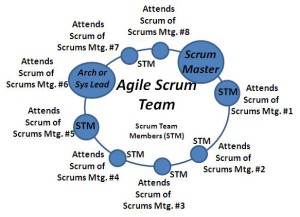 The Rotation of the Representative also helps to minimize the feeling by the Scrum Team Members that all they do is go to meetings. The Representative would only have to attend the Scrum of Scrums once every two or three weeks depending on the size of the teams, as depicted in the image.
The Rotation of the Representative also helps to minimize the feeling by the Scrum Team Members that all they do is go to meetings. The Representative would only have to attend the Scrum of Scrums once every two or three weeks depending on the size of the teams, as depicted in the image.
The Scrum Teams having Elected Representative improves the opportunity to hear what other teams are doing and bring that back into their team’s knowledge base. In many cases this becomes even more important if Scrum Masters are not very technical in nature and the Scrum of Scrums can get a little technical every once in a while. In the case of the Architectural or Systems Meetings, the Elected Representative can pick up on areas of interests that sometimes the Team’s Expert Architectural or Systems Engineers miss because of a lack of interest or a distraction.
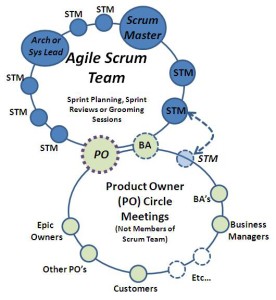 Product Owner communication circle can also utilize multiple Elected Representatives for different reasons depending on the meeting purpose. A Business Analysis might accompany a Product Owner to the Scrum Sprint Planning Sessions, Sprint Reviews or various grooming sessions to ensure business concerns are understood by the Scrum Team Members or to help bring back the technical concerns of the Scrum Teams to the Business Community.
Product Owner communication circle can also utilize multiple Elected Representatives for different reasons depending on the meeting purpose. A Business Analysis might accompany a Product Owner to the Scrum Sprint Planning Sessions, Sprint Reviews or various grooming sessions to ensure business concerns are understood by the Scrum Team Members or to help bring back the technical concerns of the Scrum Teams to the Business Community.
An Elected Scrum Team Member accompanies the Product Owner to a Business Meeting designed to allow the Product Owner to collect new business needs from customers or other business owners or to develop new User Stories. This way the STM Representative can help capture the needs and desires of the business side of the organization and bring it directly back into the Scrum Team’s knowledge base.
These Communication chains or circles could be an X Factor in a Scrum team’s performance or acceleration, however, there are two quick items that I can see that are keys for success: 1) Clear communication responsibilities and 2) management support.
The Teams and management groups have to agree beforehand how the communications at meeting would be handled, or they will quickly overrun their Time Boxed limits. For example, a company with nine Scrum teams would typically have a Scrum of Scrums meeting with nine SCM’s and maybe a project or program manager. With the addition of an Elected Representative from every Scrum Team the meetings quickly grow to 18 plus people. If everyone gets to speak like in the typical Scrum Meeting then the meeting could take hours. So to limit this: the SCM, Elected Rep and the Scrum Team all have to agree that the SCM will do all the talking unless something critical is missed. The Elected Representative’s only job is to really listen at the Scrum of Scrums and bring back intel for the Team.
The other piece needed to make Communication Circles successful comes in the form of Management / Company support for the idea of Communication Circles and Double Linking. It is easy to see that the work time for Double Linked Scrum of Scrums Circle meetings quickly doubles. Management has to be willing to allocate time and dollars for the extra personnel at the meetings. However, in the long run, I believe the Scrum Team should produce a better product when utilizing the Communication Circles and Double Linking Concepts.
I hope you give it a try and let me know how it goes.






